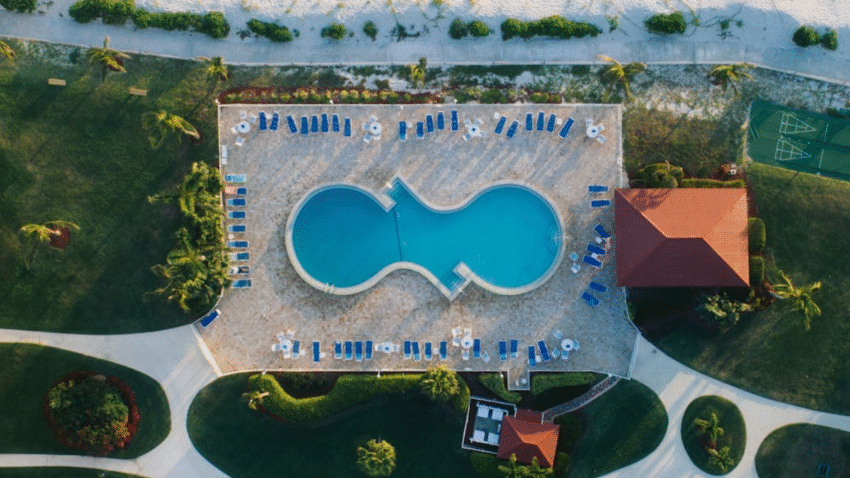Introduction
Is your pool pump noisy, your heater slow, or your filter barely working? If your setup feels outdated or inefficient, it might be time for an upgrade. This step-by-step guide will show you how to upgrade old pool equipment so your pool runs better, uses less energy, and stays clean with less effort. A few smart upgrades can make a world of difference in performance and maintenance.
Why Upgrading Old Pool Equipment Matters
Old pool equipment can cause a range of problems—poor water circulation, higher electricity bills, constant repairs, and inconsistent water quality. Upgrading ensures your system is more efficient, reliable, and eco-friendly.
Benefits of upgrading include:
- Improved energy efficiency and lower utility bills
- Better water clarity and circulation
- Quieter and faster operation
- Smart technology integration
- Fewer repairs and long-term savings
Modern pool equipment is designed with performance and convenience in mind. If your pool gear is over 8–10 years old, it may be costing you more than it’s worth.
Step-by-Step Guide to Upgrading Old Pool Equipment
Step 1: Evaluate Your Current Pool Setup
Start by taking stock of your existing equipment:
- Pool pump
- Filter (cartridge, sand, or DE)
- Heater or heat pump
- Chlorinator or salt system
- Pool lights and automation systems
Tip: Write down the brand, model, and age of each piece of equipment. This helps when comparing upgrades or talking to a pool technician.
Step 2: Prioritize What Needs Replacing
Not everything has to be upgraded at once. Start with what’s causing the most issues or costing the most to run.
Here’s a priority list:
- Old Single-Speed Pump – These are energy hogs. Replace with a variable-speed pump to cut energy costs by up to 80%.
- Outdated Filter – If cleaning takes too long or water is always cloudy, it’s time for a more efficient filter.
- Inefficient Heater – A modern gas or electric heat pump heats faster and uses less energy.
- Manual Controls – Upgrade to smart pool automation to control lights, temperature, and schedules from your phone.
- Chlorine Issues – Consider a saltwater system or automatic chlorinator to simplify sanitation.
Pool Owner Tip: Always check for compatibility with existing plumbing and electrical systems before purchasing new units.
Step 3: Research Energy-Efficient Equipment
Look for ENERGY STAR® certified options or high-efficiency ratings.
- Variable-speed pumps: Run quietly and efficiently; programmable for different tasks
- Cartridge filters: Easy to maintain and don’t require backwashing
- Solar heaters: Great for warm climates; use free solar energy
- LED pool lights: Use less power and last much longer than halogen bulbs
Caution: Make sure the upgrades fit your pool size and volume for optimal performance.
Step 4: Plan for Professional Installation (If Needed)
Some upgrades—like pumps and automation panels—are DIY-friendly if you have basic plumbing/electrical skills. But others, such as heaters or saltwater conversions, may require a licensed pool technician.
- Get multiple quotes for major installs.
- Ask about warranties—some brands offer extended coverage when installed professionally.
Tip: Upgrading multiple components at once may save on labor costs.
Step 5: Replace and Test Equipment
Once installed:
- Prime and run your new pump.
- Test filtration cycles.
- Calibrate automation systems and timers.
- Check for leaks, vibrations, or unusual sounds.
Bonus Hack: Set a reminder to recheck settings and flow rates after the first week.
Step 6: Dispose of Old Equipment Responsibly
Don’t just toss your old pump or heater.
- Contact your local recycling center for electronic or metal appliance drop-off.
- Some pool supply stores offer trade-in rebates on new equipment.
- Always remove hazardous components like old mercury thermostats properly.
Common Mistakes to Avoid
1. Buying the Wrong Size Pump or Filter
Oversized equipment wastes energy; undersized gear won’t clean properly. Always match equipment to your pool’s size and volume.
2. Overlooking Compatibility
Make sure the voltage, plumbing size, and connections match your current system to avoid costly retrofits.
3. Ignoring Long-Term Costs
Cheaper equipment might cost less upfront but more over time. Invest in durable, efficient gear with good warranties.
4. Not Setting Up New Timers or Schedules
Many owners forget to program new systems, which leads to inefficiency. Always set proper run times for your region and pool usage.
5. Failing to Register Your Warranty
Always register new equipment online with the manufacturer. It’s quick and protects your investment.
Extra Tips & Pool Hacks
1. Combine Upgrades with a Pool Automation System
Modern systems allow you to control pumps, heaters, lighting, and chemical levels from a smartphone app or control panel.
2. Add a Flow Meter
A flow meter lets you monitor how efficiently your pool water is circulating—ideal for fine-tuning your pump’s settings.
3. Check Local Rebates
Some utility companies offer rebates for installing energy-efficient pool equipment—especially variable-speed pumps or solar heaters.
Bonus Link:
Want to protect your new gear during winter? [Check out our full guide on how to maintain your pool equipment during the off-season.]
Conclusion
Upgrading old pool equipment is one of the best investments you can make for your pool’s performance, safety, and cost-efficiency. Whether you start small with a pump upgrade or go big with automation and heating, modern equipment pays off with cleaner water, lower bills, and less hassle.
Final Tip: Keep your receipts, manuals, and installation records handy—they’ll come in useful when it’s time for maintenance or warranty claims.
